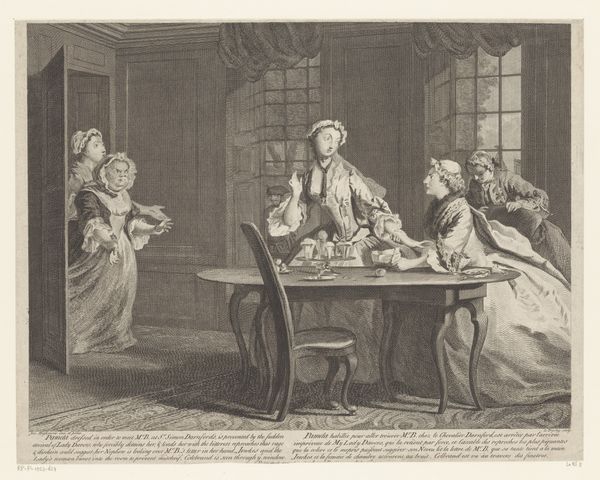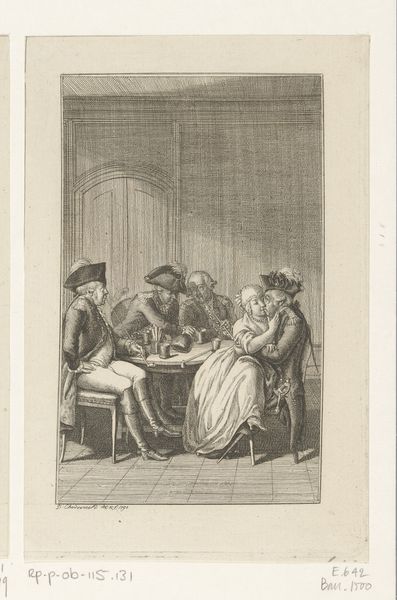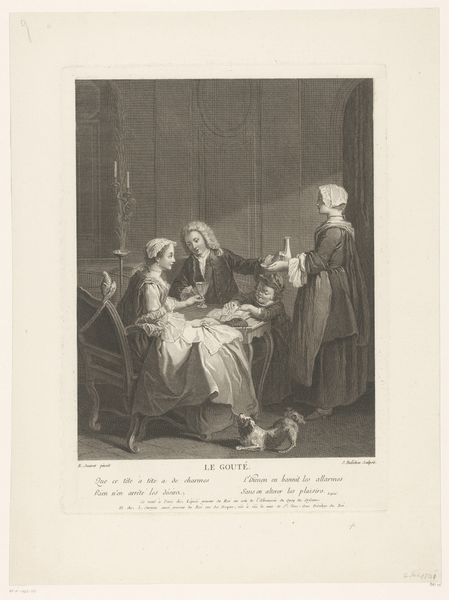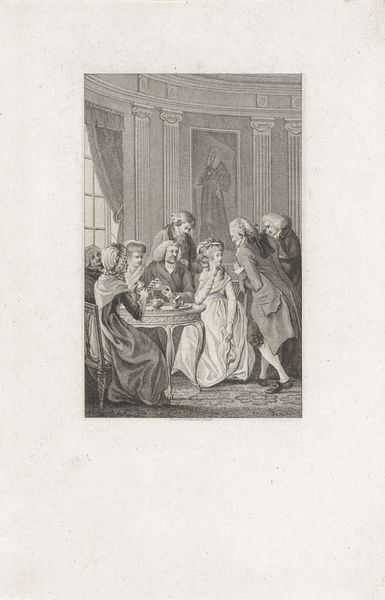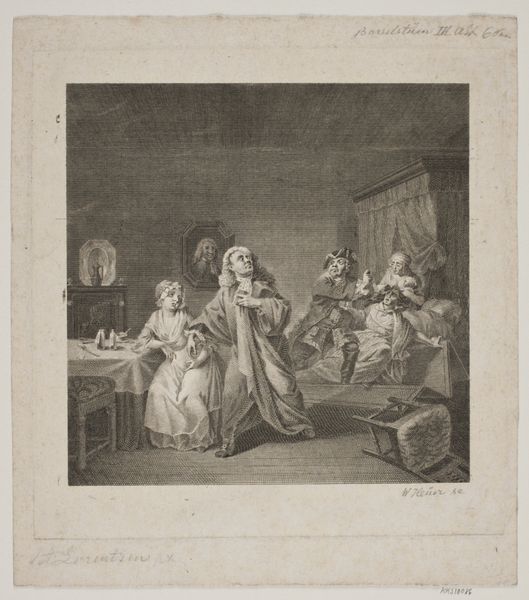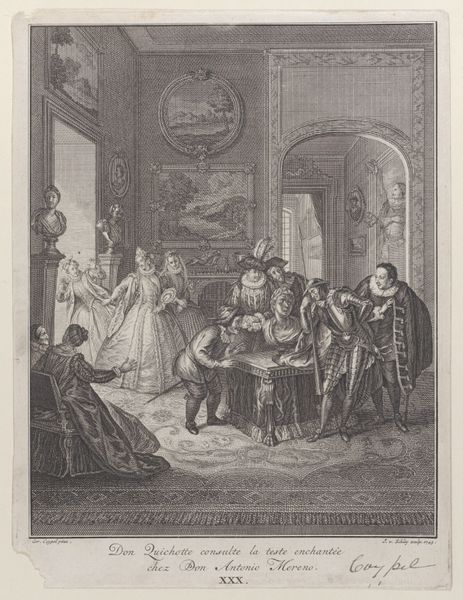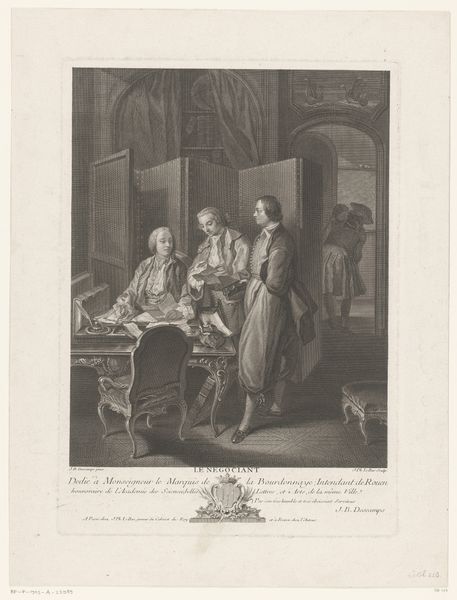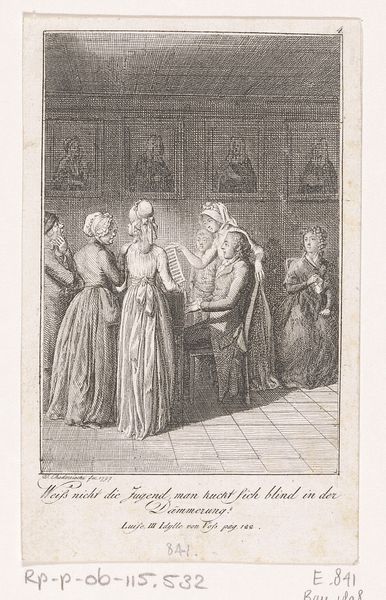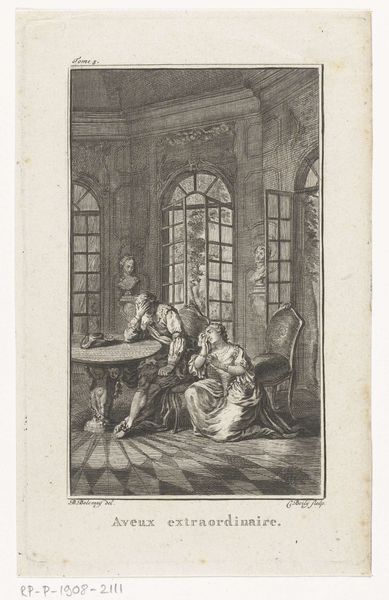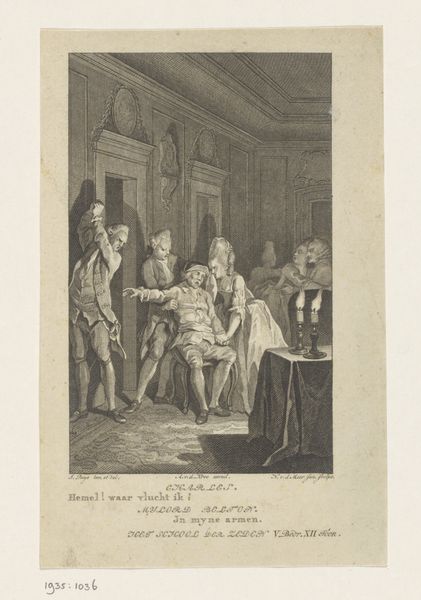
print, engraving
#
portrait
#
baroque
# print
#
19th century
#
genre-painting
#
engraving
Dimensions: height 379 mm, width 273 mm
Copyright: Rijks Museum: Open Domain
Editor: This is “Saloninterieur met triktrakspelend gezelschap,” dating from around 1730 to 1783. It's a print, an engraving, housed here at the Rijksmuseum. I find it captivating – the composition draws me right into this intimate domestic scene. What's your read on this work? Curator: It’s a fantastic example of genre painting becoming popular during that era, revealing how leisure and domesticity were being consumed and presented. This seemingly simple scene tells us a lot about the social roles and the performance of class in 18th-century society. Editor: So it's not *just* a scene of people passing the time? Curator: Not at all. Consider the context: the rise of the bourgeoisie, increasing wealth, and a shift in social values. Leisure activities, like the game they're playing, "triktrak," were markers of status and sophistication. The print format itself is important here. Prints made art accessible to a broader public. What do you think that meant for the art world at the time? Editor: I guess it democratized art, making it less exclusive? Curator: Exactly! Suddenly, these scenes of bourgeois life could be circulated widely, reinforcing those social ideals. Think about the carefully composed interior, the fashionable clothes – all designed to project a specific image. Also, consider the subtle politics of imagery at play. This wasn’t just art for art’s sake; it was reinforcing a social order. Editor: So the artwork is less about the game itself and more about showing and promoting a specific lifestyle? I never would have thought about that. Thank you! Curator: Precisely! It's a fascinating look into the cultural values of the period. I'm glad we got to discuss it.
Comments
No comments
Be the first to comment and join the conversation on the ultimate creative platform.
